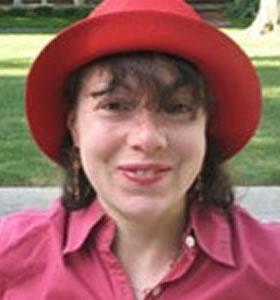
Professor of Chemistry, Mathematics, and Computer Science
Department of Chemistry and Courant Institute of Mathematical Sciences, NYU
Email: schlick@nyu.edu
Tamar Schlick, Professor of Chemistry, Mathematics, and Computer Science at New York University, received her Ph.D. in Applied Mathematics from the Courant Institute of Science and, after a postdoc fellowship at the Weizmann Institute working with a grand pioneer of molecular mechanics, the late Shneior Lifson, she joined the faculty of NYU. She is recognized for developing innovative mathematical and computational tools for biomolecular modeling and simulation and applying them to important biological problems including DNA supercoiling and chromatin structure/function, polymerase mechanisms, and RNA structure, function, and design. She has published over 220 papers, is a member of several editorial boards and advisory committees in mathematics, computational biology and chemistry, and is highly active in the community by organizing conferences and new educational programs. She has trained about 35 postdoctoral fellows and 35 research students, as well as a dozen of undergraduate and high school students. Among Schlick's honors are Fellow of SIAM, Biophysical Society, APS and AAAS; John Simon Guggenheim Foundation Fellow; Alfred P. Sloan Research Fellow; Howard Hughes Medical Institute Associate Investigator; and NSF Presidential Young Investigator. Her modeling textbook (second edition, 2010) is widely used in biophysics courses worldwide.
Recent Publications:
- S. S. P. Rao, S.-C Huang, B. G. St. Hilaire, J. M. Engreitz, E. M. Perez, K.-R Kieffer-Kwon, A. L. Sanborn, S. E. Johnstone, G. D. Bascom, I. D. Bochkov, X. Huang, M. S. Shamim, J. Shin, D. Turner, A. D. Omer, J. T. Robinson, T. Schlick, B. E. Bernstein, R. Casellas, E. Lander, and E. Lieberman-Aiden, “Cohesin Loss Eliminates All Loop Domains, Leading to Links Among Superenhancers and Downregulation of Nearby Genes”, Cell 171: 305–320 (2017).
- T. Schlick, “Adventures with RNA Graphs”, Submitted to Biophysics of RNA-Protein Interactions, D. Rueda and C. Joo, Editors, Springer Verlag, New York.
- S. Jain and T. Schlick, “F-RAG: Generating Atomic Coordinates from RNA Graphs by Fragment Assembly”, J. Mol. Biol. 429: 3587–3605 (2017).
- L. Petingi and T. Schlick, “Partitioning and Classification of RNA Secondary Structures into Pseudonotted and Pseudoknot-free Regions Using a Graph-Theoretical Approach”, IAENG [Int. Assoc. Eng.] Intl. J. Comp. Sci., 44 (2): 241–246 (2017).
- O. Perisic and T. Schlick, “Dependence of the Linker Histone and Chromatin Condensation on the Nucleosome Environment”, J. Phys. Chem. B 121: 7823–7832 (2017).
- C. V Bayrak, N. Kim, and T. Schlick, “RNA Structure Prediction with Knowledge-Based Statistical Potentials for Kink-Turn Motifs”, Nuc. Acids Res. 45 (9): 5414–5422s (2017). [doi: 10.1093/nar/gkx045]
- G. Bascom, T. Kim, and T. Schlick, “Kilobase Pair Chromatin Fiber Contacts Promoted by Living-System-Like DNA Linker Length Distributions and Nucleosome Depletion”, J. Phys. Chem. B Special Issue in Memory of Klaus Schulten 121 (15): 3882–3894 (2017). [Published onlineMarch 16, DOI: 10.1021/acs.jpcb.7b00998]
- G. Bascom and T. Schlick, “Mesoscale Modeling of Chromatin Fibers”, Chapter 4, pp. 123–148, Nuclear Architecture and Dynamics, C. Lavelle and J.-M. Victor, Eds., Academic Press, Elsevier (2017).
- T. Schlick and A. Pyle, “Opportunities and Challenges in RNA Structure Modeling and Design”, Biophys. J. 113: 225–234 (2017).
- T. Schlick and L. Loew, “Unraveling Genome Biophysics”, Biophys. J. 112: E1–E2 (2017).
- G. Bascom and T. Schlick, “Linking Chromatin Fibers to Gene Folding by Hierarchical Looping”, Biophys. J. 112: 434–445 (2017).


